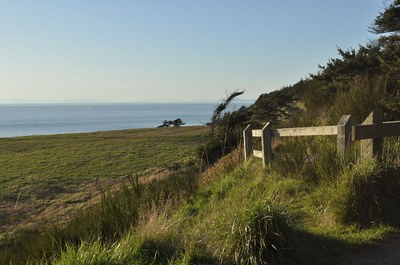
Field trip: Conditioning Hiking Series
CHS 2 Hike - Fort Ebey
CHS2 hike from Ebey's Landing to Fort Ebey.
- Sat, Jun 15, 2019
- Seattle Hiking Committee
- Day Hiking
- Adults
- Moderate/Strenuous
- Challenging
- Mileage: 12.9 mi
- Elevation Gain: 948 ft
- High Point Elevation: 266 ft
- Pace: 2.0-3.0 mph
- 2 (11 capacity)
- Cancellation & Refund Policy
We will meet at 9:00 a.m. in the Ebey's Landing parking lot on Whidbey Island. Please do not park in the Fort Ebey State Park parking lot; we are hiking to Fort Ebey from Ebey's Landing.
If you choose to take the Mukilteo/Clinton ferry, you will need to take the 8:00 a.m. sailing. Generally, the Mukilteo/Clinton ferry is the fastest way to Ebey's Landing if coming from the south; however, you may choose to take the northern route via I-5 to HWY-20. If so, please allow plenty of time to arrive at Ebey's Landing and ready to hike by 9:00 a.m., but note that the ferry might be delayed due to fog or other issues, so be prepared to wait for the remaining hikers.
You will need a Discover Pass to park at Ebey's Landing.
Eagles, orcas, and otters - oh my! Ebey's Landing to Fort Ebey is a challenging, but rewarding, hike, and one of my all-time favorites. With a variety of terrain, unsurpassed views of the Salish Sea and Olympics, and an abundance of wildlife, this is a hike not to be missed.
We will begin hiking on the beach at Ebey's Landing, pass Perego's Lagoon, head up and down the bluff for a view of Lake Pondilla, have lunch at Fort Ebey, return to the beach then climb the bluff above Perego's Lagoon, and finally take a short tour of Ebey's Landing National Historic Reserve, including a stop at the Sunnyside Cemetery.
Because we will be hiking on loose stones, seaweed, and larger rocks, I strongly recommend the wearing of over-the-ankle boots (your ankles will thank you).
I will supply a topographic map to each of you, but if you would like to purchase a map showing all of the trails at Fort Ebey State Park, the Fort Ebey State Park & Kettles Park Trail System by Trax Maps is the map for you.
Required Equipment
Ten Essential Systems
- Navigation (map & compass)
- Sun protection (sunglasses & sunscreen)
- Insulation (extra clothing)
- Illumination (headlamp/flashlight)
- First-aid supplies
- Fire (waterproof matches/lighter/candle)
- Repair kit and tools
- Nutrition (extra food)
- Hydration (extra water)
- Emergency shelter (tent/plastic tube tent/garbage bag)
